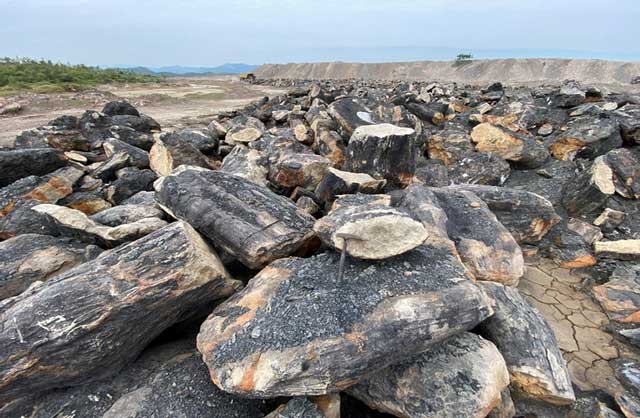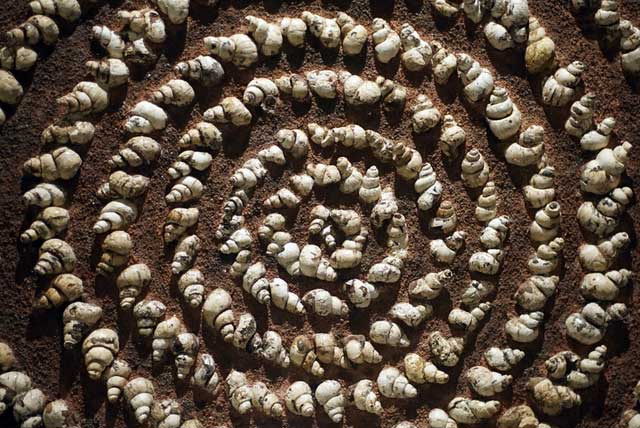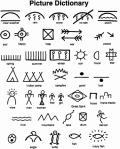Scientists highly value the research potential of the fossils discovered here.
The fossil site is located in San Vien Commune, Loc Binh District, Lang Son, in the Na Duong depression, which is the result of the slippage activity of the Cao Bang – Tien Yen fault. Additionally, it is the largest brown coal basin on land in Vietnam with reserves exceeding 100 million tons. Here, besides coal resources, there are many geological heritage resources that possess unique value in paleostratigraphy, paleogeography, paleoenvironments, etc., reflecting an interesting and attractive geological history of formation and development, luring many scientists and tourists from both domestic and international backgrounds to visit, explore, and research.

Fossils of plant species found at the largest fossil site in Southeast Asia in Vietnam. (Photo: Lang Son Geopark)
Na Duong is an outcrop of Tertiary sediments approximately 33 million years old, containing the richest fossil remains in Vietnam and Southeast Asia.
According to the Lang Son Geopark website, scientists have discovered numerous fossils of vertebrate and invertebrate animals, as well as plants that developed around 20 to 30 million years ago, many of which still exist today.
The Vietnam Tourism Environment page reports that regarding plants, analyses of pollen spores and fossils, particularly leaf, stem, and fruit impressions, have indicated the existence of moist tropical and subtropical forests. Many resin-rich plant species thrived in temperate humid, subtropical, or hot humid tropical climates, including: Fagaceae (beech family): Quercus (oak), Lauraceae (laurel family), Moraceae (mulberry), Diospyros (persimmon), Ficus (fig).

Fossilized wooden trunks at Na Duong. (Photo: Lang Son Geopark).
In the coal mining area, experts have also found a population of fossilized wooden trunks. These tree trunks can reach heights of several dozen meters.
Regarding animals, the fossils found in Na Duong are rich and include mollusks, vertebrates such as fish, turtles, crocodiles, and particularly mammal fossils (anthracotheres, rhinoceros, primates)… Many species and genera have been given local names such as: freshwater snail Bacbotricula, freshwater mussels (5 species), fish (9 species), turtles (5-6 species), crocodiles (3 species, including the species Orientalosuchus naduongensis)…
Among these, scientists have discovered two new mammal species: the rhinoceros Epiaceratherium naduongensis and the anthracotherium (Bakalovia Orientalis and Anthracokeryx naduongensis); one new reptile species classified into a genus and a new turtle species Pan-Trionychid, many of which still survive today.

Fossil skull of the anthracotherium Bakalovia Orientalis. (Photo: Madelaine Bohme).
The anthracotherium are hoofed animals resembling pigs, closely related to hippos, and have a semi-aquatic lifestyle in shallow wetlands along rivers and lakes. Researchers have provided evidence and demonstrated that the mammal species in the Na Duong basin are the ancestors of rhinoceros and anthracotherium species in Europe. Thanks to this discovery, Na Duong has become an important site in Southeast Asia for the dispersal of mammals across continents along the northern edge of the Tethys Ocean.
From these discoveries, scientists have sketched a comprehensive picture of the ecosystem of the Na Duong depression over 30 million years ago. Accordingly, Na Duong was once a swamp and freshwater lake. It developed dense forests with a rich animal world, including reptiles such as turtles, crocodiles, and large animals such as anthracotherium and rhinoceroses. However, later, due to localized flooding in Na Duong, the animal species here went extinct.

Fossilized freshwater snail shells found in the Na Duong depression. (Photo: Knowledge & Life).
To enhance the historical and cultural values that the Na Duong depression offers, the project for the construction and development of the Lang Son Geopark has chosen this area to coordinate landscape restoration and infrastructure development aimed at becoming a tourist attraction and serving the scientific research activities of visitors as well as scientists.





















































